Audi 2013 Annual Report Download - page 262
Download and view the complete annual report
Please find page 262 of the 2013 Audi annual report below. You can navigate through the pages in the report by either clicking on the pages listed below, or by using the keyword search tool below to find specific information within the annual report.-
 1
1 -
 2
2 -
 3
3 -
 4
4 -
 5
5 -
 6
6 -
 7
7 -
 8
8 -
 9
9 -
 10
10 -
 11
11 -
 12
12 -
 13
13 -
 14
14 -
 15
15 -
 16
16 -
 17
17 -
 18
18 -
 19
19 -
 20
20 -
 21
21 -
 22
22 -
 23
23 -
 24
24 -
 25
25 -
 26
26 -
 27
27 -
 28
28 -
 29
29 -
 30
30 -
 31
31 -
 32
32 -
 33
33 -
 34
34 -
 35
35 -
 36
36 -
 37
37 -
 38
38 -
 39
39 -
 40
40 -
 41
41 -
 42
42 -
 43
43 -
 44
44 -
 45
45 -
 46
46 -
 47
47 -
 48
48 -
 49
49 -
 50
50 -
 51
51 -
 52
52 -
 53
53 -
 54
54 -
 55
55 -
 56
56 -
 57
57 -
 58
58 -
 59
59 -
 60
60 -
 61
61 -
 62
62 -
 63
63 -
 64
64 -
 65
65 -
 66
66 -
 67
67 -
 68
68 -
 69
69 -
 70
70 -
 71
71 -
 72
72 -
 73
73 -
 74
74 -
 75
75 -
 76
76 -
 77
77 -
 78
78 -
 79
79 -
 80
80 -
 81
81 -
 82
82 -
 83
83 -
 84
84 -
 85
85 -
 86
86 -
 87
87 -
 88
88 -
 89
89 -
 90
90 -
 91
91 -
 92
92 -
 93
93 -
 94
94 -
 95
95 -
 96
96 -
 97
97 -
 98
98 -
 99
99 -
 100
100 -
 101
101 -
 102
102 -
 103
103 -
 104
104 -
 105
105 -
 106
106 -
 107
107 -
 108
108 -
 109
109 -
 110
110 -
 111
111 -
 112
112 -
 113
113 -
 114
114 -
 115
115 -
 116
116 -
 117
117 -
 118
118 -
 119
119 -
 120
120 -
 121
121 -
 122
122 -
 123
123 -
 124
124 -
 125
125 -
 126
126 -
 127
127 -
 128
128 -
 129
129 -
 130
130 -
 131
131 -
 132
132 -
 133
133 -
 134
134 -
 135
135 -
 136
136 -
 137
137 -
 138
138 -
 139
139 -
 140
140 -
 141
141 -
 142
142 -
 143
143 -
 144
144 -
 145
145 -
 146
146 -
 147
147 -
 148
148 -
 149
149 -
 150
150 -
 151
151 -
 152
152 -
 153
153 -
 154
154 -
 155
155 -
 156
156 -
 157
157 -
 158
158 -
 159
159 -
 160
160 -
 161
161 -
 162
162 -
 163
163 -
 164
164 -
 165
165 -
 166
166 -
 167
167 -
 168
168 -
 169
169 -
 170
170 -
 171
171 -
 172
172 -
 173
173 -
 174
174 -
 175
175 -
 176
176 -
 177
177 -
 178
178 -
 179
179 -
 180
180 -
 181
181 -
 182
182 -
 183
183 -
 184
184 -
 185
185 -
 186
186 -
 187
187 -
 188
188 -
 189
189 -
 190
190 -
 191
191 -
 192
192 -
 193
193 -
 194
194 -
 195
195 -
 196
196 -
 197
197 -
 198
198 -
 199
199 -
 200
200 -
 201
201 -
 202
202 -
 203
203 -
 204
204 -
 205
205 -
 206
206 -
 207
207 -
 208
208 -
 209
209 -
 210
210 -
 211
211 -
 212
212 -
 213
213 -
 214
214 -
 215
215 -
 216
216 -
 217
217 -
 218
218 -
 219
219 -
 220
220 -
 221
221 -
 222
222 -
 223
223 -
 224
224 -
 225
225 -
 226
226 -
 227
227 -
 228
228 -
 229
229 -
 230
230 -
 231
231 -
 232
232 -
 233
233 -
 234
234 -
 235
235 -
 236
236 -
 237
237 -
 238
238 -
 239
239 -
 240
240 -
 241
241 -
 242
242 -
 243
243 -
 244
244 -
 245
245 -
 246
246 -
 247
247 -
 248
248 -
 249
249 -
 250
250 -
 251
251 -
 252
252 -
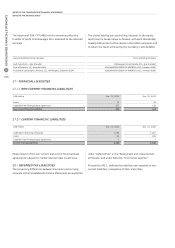 253
253 -
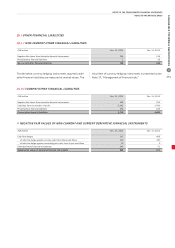 254
254 -
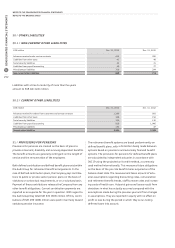 255
255 -
 256
256 -
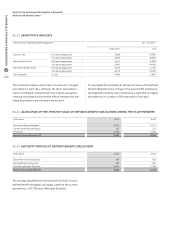 257
257 -
 258
258 -
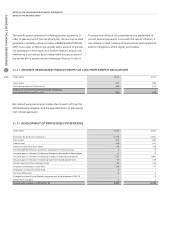 259
259 -
 260
260 -
 261
261 -
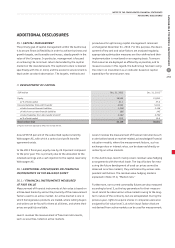 262
262 -
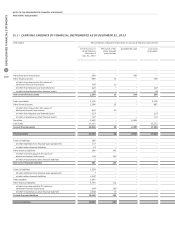 263
263 -
 264
264 -
 265
265 -
 266
266 -
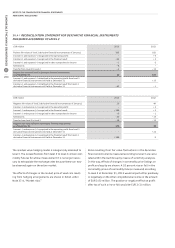 267
267 -
 268
268 -
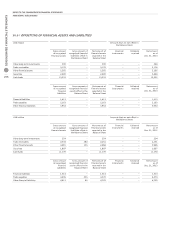 269
269 -
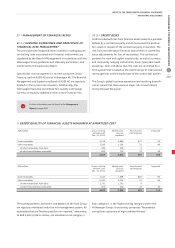 270
270 -
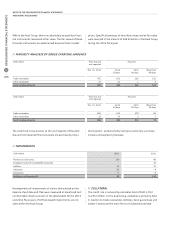 271
271 -
 272
272 -
 273
273 -
 274
274 -
 275
275 -
 276
276 -
 277
277 -
 278
278 -
 279
279 -
 280
280 -
 281
281 -
 282
282 -
 283
283 -
 284
284 -
 285
285 -
 286
286 -
 287
287 -
 288
288 -
 289
289 -
 290
290 -
 291
291 -
 292
292 -
 293
293 -
 294
294 -
 295
295 -
 296
296 -
 297
297
 |
 |

NOTES TO THE CONSOLIDATED FINANCIAL STATEMENTS
ADDITIONAL DISCLOSURES
CONSOLIDATED FINANCIAL STATEMENTS
259
B
ADDITIONAL DISCLOSURES
35 /
CAPITAL MANAGEMENT
The primary goal of capital management within the Audi Group
is to assure financial flexibility in order to achieve business and
growth targets, and to enable continuous, steady growth in the
value of the Company. In particular, management is focused
on achieving the minimum return demanded by the capital
market on the invested assets. The capital structure is steered
specifically with this in mind, and the economic environment is
kept under constant observation. The targets, methods and
procedures for optimizing capital management remained
unchanged at December 31, 2013. For this purpose, the devel-
opment of key cost and value factors are analyzed regularly;
appropriate optimization measures are then defined and their
implementation is monitored on an ongoing basis. To ensure
that resources are deployed as efficiently as possible, and to
measure success in this regard, the Audi Group has been using
the return on investment as an indicator based on capital
expenditure for several years now.
//
DEVELOPMENT OF CAPITAL
EUR million
Dec. 31, 2013 Dec. 31, 2012 1)
Equity 18,565 15,092
as % of total capital 41.1 37.4
Financial liabilities from profit transfer 4,595 5,103
of which current financial liabilities 1,228 1,168
of which non-current financial liabilities 186 145
of which liabilities from the transfer of profit 3,182 3,790
as % of total capital 10.2 12.6
Balance sheet total 45,156 40,401
1) Figures have been adjusted to reflect the revised IAS 19.
Around 99.55 percent of the subscribed capital is held by
Volkswagen AG, with which a control and profit transfer
agreement exists.
In the 2013 fiscal year, equity rose by 23.0 percent compared
to the prior year. This is primarily due to the allocation to the
retained earnings and a cash injection to the capital reserve by
Volkswagen AG.
36 /
ADDITIONAL DISCLOSURES ON FINANCIAL
INSTRUMENTS IN THE BALANCE SHEET
36.1 /
FINANCIAL INSTRUMENTS MEASURED
AT FAIR VALUE
Measurement of financial instruments at fair value is based on
a three-level hierarchy and on the proximity of the measurement
factors used to an active market. An active market is one in
which homogeneous products are traded, where willing buyers
and sellers can be found for them at all times, and where their
prices are publicly available.
Level 1 involves the measurement of financial instruments,
such as securities, listed on active markets.
Level 2 involves the measurement of financial instruments such
as derivatives based on market-related, acknowledged financial
valuation models, where the measurement factors, such as
exchange rates or interest rates, can be observed directly or
indirectly on active markets.
In the Audi Group, level 3 mainly covers residual value hedging
arrangements with the retail trade. The input factors for mea-
suring the future development of used car prices cannot be
observed on active markets; they are forecast by various inde-
pendent institutions. The residual value hedging model is
explained in Note 37.4, “Market risks.”
Furthermore, non-current commodity futures are also measured
according to level 3, as the key parameters for their measure-
ment cannot be observed on active markets owing to the long-
term nature of the contracts, but are extrapolated. During the
previous year, rights to acquire shares in companies were also
assigned to fair value level 3, at which input factors that are
not derived from active markets can be used for measurement.
